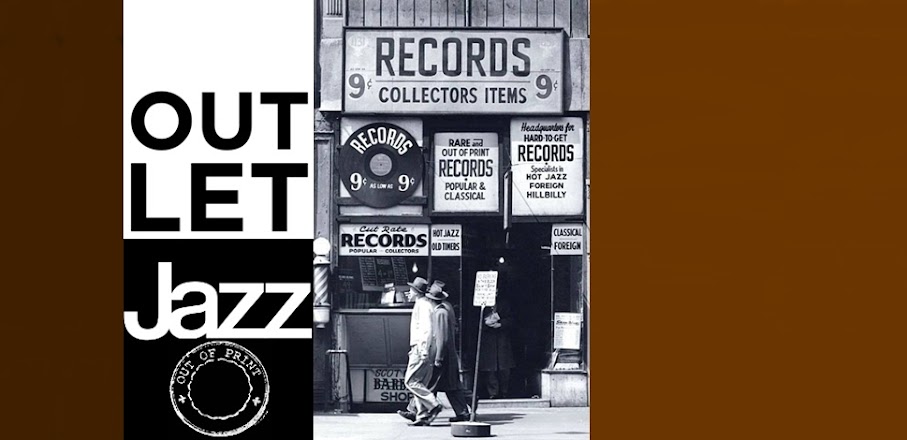Horace Ward Martin Tavares Silver is the most important new keyboard comet to flash across the jazz firmament in recent years. This statement, though it may sound like a publicity blurb, happens to reflect the opinion of an authoritative body of prominent musicians.
Here is an album that presents one of the brightest, hardest-swinging groups in contemporary jazz. There may be many items in your collection that you would gladly be willing to trade for these seven pieces of Silver. *Leonard Feather (liner notes [1956])*
Silver’s Blue was basically a Jazz Messengers record, but since Art Blakey wasn’t on it and since he was so vital a component of the original Messengers, it was decided that this was to be a Horace Silver Quintet album. But the elements of the record are the same — some original tunes, some treatments of standards and good, solid playing from everyone. My influences have always been the same — the best in American music. Gospel, blues, bebop, show tunes, Latin rhythms, even American classical music show up in my writing.
*Horace Silver (liner notes [2005])*
In my late twenties and early thirties, most of the jazz record companies wanted their artists to record standard compositions that people were familiar with. They would allow you to record some original compositions, but their main thrust was the standards. I recorded an album called Silver's Blue for Epic Records in 1956. George Avakian was the producer. I approached him with six originals that I wanted to record. He wanted me to do three standards and three originals. I reviewed some of my favorite standard compositions and chose three to arrange for the session. The session came off well, and I am proud of it.
*Horace Silver (from Let’s Get to the Nitty Gritty: The Autobiography of Horace Silver)*
Two sessions (sic) in the mid-'50s produced the material for this album, which despite or perhaps because of being one of the historical early recordings of the Horace Silver Quintet, was later treated to a confusing mess of reissues, some of which never really mentioned what was so historic about the material in the first place. Maybe there was no reason to, since by the new millennium the type of groovy, funky jazz Silver was famous for had become so in demand that any recording of the authentic item was considered coated with golden fairy dust. In the late '80s, when this particular imprint was released on the public, just the fact that it was a reissue of something old seemed to be enough. The liner notes begin with a pretentious description of the lengths to which the geniuses who remastered this went, in order to not only preserve the integrity of the original tapes but to bring them up to the standards of the era. Which everyone knows were no standards and, anyway, these tapes sounded fantastic in the first place.
First off, the liner notes should have said, "Listen to Hank Mobley". The tenor saxophonist is the first to solo on the title track, and what a beautiful improvisation it is, always centered around the blues but twisting through some melodic turns of phrases that reference folk songs and who knows what else. Besides the pianist, who is in his usual tasty form, it is Mobley who makes this álbum really breathe, as neither trumpeter Will really knock one's socks off. Joe Gordon is a bit undersung, true, but he also has a pinched sound in the upper register and a habit of noodling his way from change to change as if he felt inspiration was just around the corner. For the second sesión he is replaced by Donald Byrd, who has his moments despite relying on stock phrases at times when the intensity of his solo is just building up. The arrangement of "How Long Has This Been Going On?" is refreshingly quiet and gentle, showing that Silver had more than one direction and bringing forth another type of tone from Mobley, all velvet and feathers. Songwriter Frank Loesser's "I'll Know" is also given a bright, catchy arrangement. The theme is stated in a series of slowly unfolding pronouncements building up to a great moment right before the solos start, when a strong medium-tempo groove comes in. On his solo, the pianist lays out his notes like a casino dealer providing cards all around to all the players, following blues licks with rapid chromatic bop devilments. The original "Shoutin' Out" is the kind of stuff Silver is really known for, and it is fantastic. The fine drummer Kenny Clarke, who always played well with Silver, is on hand throughout.
*Eugene Chadbourne*
The Horace Silver Quintet
Silver's Blue
1 - Silver's Blue
(Horace Silver)
2 - To Beat Or Not To Beat
(Horace Silver)
3 - How Long Has This Been Going On?
(Ira and George Gershwin)
4 - I'll Know
(Frank Loesser)
5 - Shoutin' Out
(Horace Silver)
6 - Hank's Tune
(Hank Mobley)
7 - The Night Has A Thousand Eyes
(Buddy Bernier, Jerry Brainin)
Horace Silver (piano); Joe Gordon [#2, #5], Donald Byrd [#1, #3, #4, #6,#7] (trumpets); Hank Mobley (tenor sax); Doug Watkins (bass); Kenny Clarke [#2, #5], Art Taylor [#1, #3, #4, #6,#7] (drums).
Recorded at Columbia Studio "D", New York City, July 2 (#2, #5), July 18 (#3, #6, #7) and July 19 (#1, #4), 1956.



https://www.mediafire.com/file/jsnzvjz8601wyz4/HS_slvrsbl.rar/file
ReplyDeleteMuchas gracias
ReplyDeleteMuy bueno. Gracias,
ReplyDeletetengo mucho alegria para Silver ;-). Thanks blbs
ReplyDelete